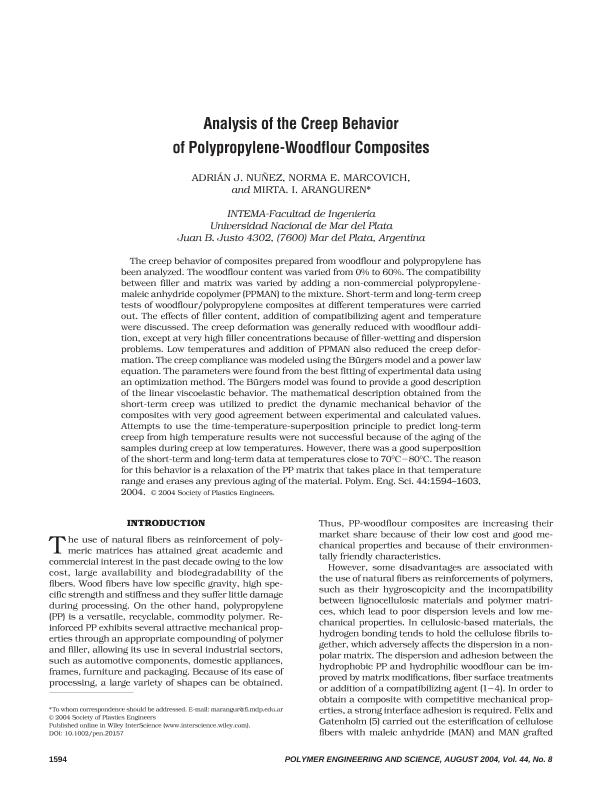Artículo
Analysis of the creep behavior of polypropylene-woodflour composites
Fecha de publicación:
08/2004
Editorial:
John Wiley & Sons Inc
Revista:
Polymer Engineering and Science
ISSN:
0032-3888
Idioma:
Inglés
Tipo de recurso:
Artículo publicado
Clasificación temática:
Resumen
The creep behavior of composites prepared from woodflour and polypropylene has been analyzed. The woodflour content was varied from 0% to 60%. The compatibility between filler and matrix was varied by adding a non-commercial polypropylenemaleic anhydride copolymer (PPMAN) to the mixture. Short-term and long-term creep tests of woodflour/polypropylene composites at different temperatures were carried out. The effects of filler content, addition of compatibilizing agent and temperature were discussed. The creep deformation was generally reduced with woodflour addition, except at very high filler concentrations because of filler-wetting and dispersion problems. Low temperatures and addition of PPMAN also reduced the creep deformation. The creep compliance was modeled using the Bürgers model and a power law equation. The parameters were found from the best fitting of experimental data using an optimization method. The Bürgers model was found to provide a good description of the linear viscoelastic behavior. The mathematical description obtained from the short-term creep was utilized to predict the dynamic mechanical behavior of the composites with very good agreement between experimental and calculated values. Attempts to use the time-temperature- superposition principle to predict long-term creep from high temperature results were not successful because of the aging of the samples during creep at low temperatures. However, there was a good superposition of the short-term and long-term data at temperatures close to 70°C-80°C. The reason for this behavior is a relaxation of the PP matrix that takes place in that temperature range and erases any previous aging of the material.
Archivos asociados
Licencia
Identificadores
Colecciones
Articulos(INTEMA)
Articulos de INST.DE INV.EN CIENCIA Y TECNOL.MATERIALES (I)
Articulos de INST.DE INV.EN CIENCIA Y TECNOL.MATERIALES (I)
Citación
Nunez, Adrián J.; Marcovich, Norma Esther; Aranguren, Mirta Ines; Analysis of the creep behavior of polypropylene-woodflour composites; John Wiley & Sons Inc; Polymer Engineering and Science; 44; 8; 8-2004; 1594-1603
Compartir
Altmétricas




